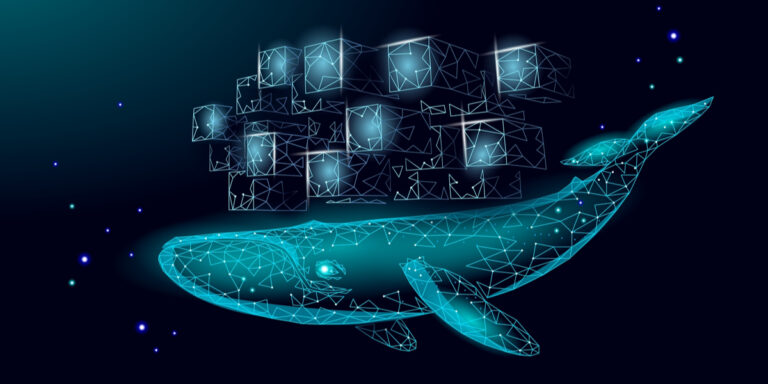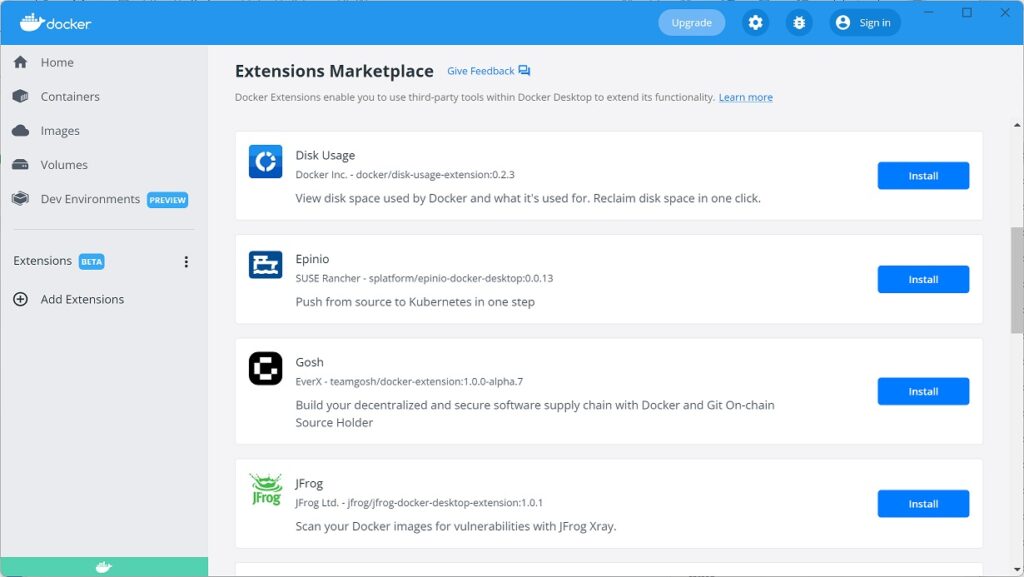
Docker put out a new Extensions feature at its virtual DockerCon event, which opened today. There is also the first release of Docker Desktop for Linux, joining the existing support for Windows and Mac and providing the same features.
Docker Desktop package tools including Docker Compose, the Docker command line (CLI) and local Kubernetes, and provides management tools. Docker Extensions extend the functionality of Docker Desktop or the CLI with tools built either by Docker or third parties.
Some examples from the initial releases include: a disk usage analyzer and a log explorer from Docker itself and from third parties; security analyzers from Snyk, JFrog, Anchore and Aqua Trivy; VMWare Tanzu for a VMware-flavoured local Kubernetes cluster; Tailscale for connecting Docker containers to a VPN; and an OpenShift deployment tool from RedHat.

Extensions are packaged as a Docker image which includes a metadata.json file describing its contents. Extensions may contain any of three parts, including a UI part that adds a tab in Docker Desktop, a VM service which runs in one or more containers, and binaries that install directly on the host machine. The UI part, if it exists, is built in HTML and JavaScript. There are design guidelines which encourage use of React and the Docker Material UI theme.

“Extensions give developers a way to discover, download, configure and start using tools simply,” Docker CEO Scott Johnston told DevClass. “In one click they’ve got a complete tool set that complements their Docker tooling.”
Although Desktop is not required to use Extensions, they do integrate with Desktop and in most cases provide a UI there. Why the focus on Desktop when Docker is at heart a command-line tool?
“What Desktop does is that it lays down all the cloud-native tools for modern app development,” Johnston told us. “It also has automatic updating capabilities for hot patches or security updates. Large organizations want the managed desktop environment because they don’t want their devs wasting time playing with open source stuff,” said Johnston, meaning the complexity that can occur when assembling tools from a variety of sources.
Why the need for a Linux Desktop tool when so many Linux developers are command-line oriented? “The request for Docker desktop for Linux has been the number one request on our public roadmap for the last 12 months,” Johnston said. “Linux workstation users are looking over their shoulder at colleagues on Mac and Windows and seeing the productivity benefits.” There was also demand from enterprises which wanted to make the Docker tooling consistent whatever platform developers are using.
Docker (the company) has been engaged in a long-term process of rebalancing what it gives away versus its commercial offerings, in an effort to improve its business model. One example was a change to Docker Desktop licensing, which last year was changed to require a paid subscription for businesses with more than 250 employees. Has the company now reached the place where it wants to be with respect to the business model?
“Well over 80 percent of developers continue to use Docker Desktop for free, which is by design” Johnston told us. “We do not anticipate having to take away more free stuff.”
However, the company is building up commercial licensing for the kinds of add-ons that enterprises need, such as “managing large teams of developers at scale,” said Johnston.
“We’re just excited that we’re here, together with the ecosystem, leading the industry. Two and a half years ago that was in question,” he added.
